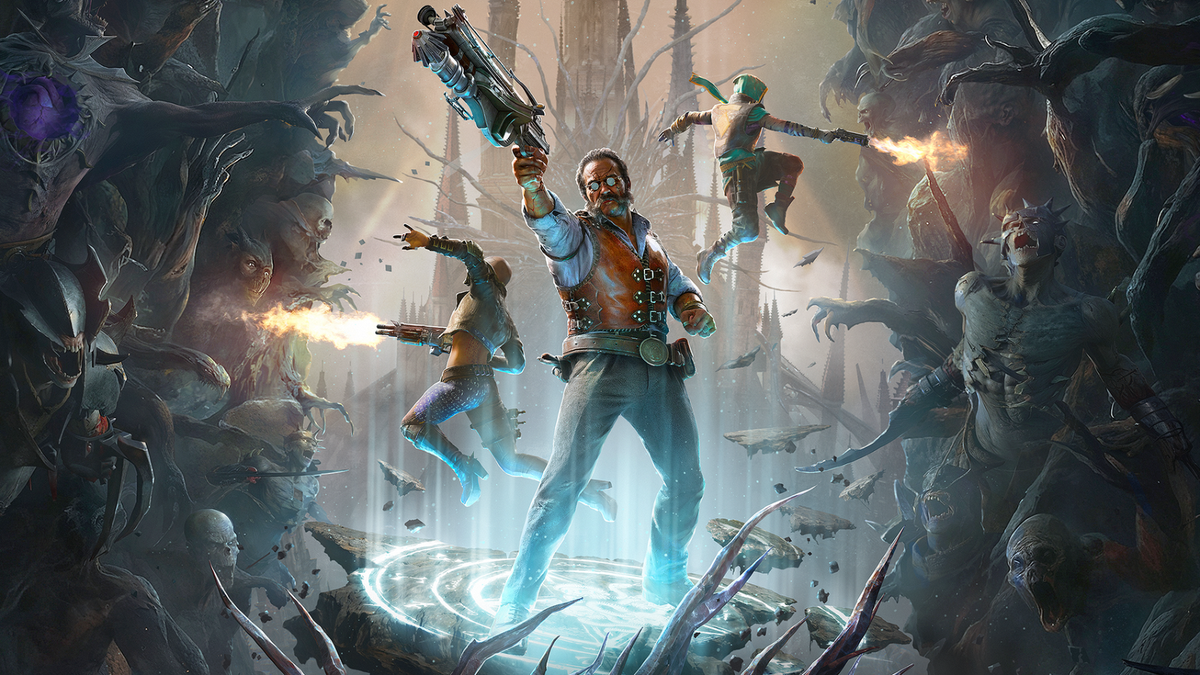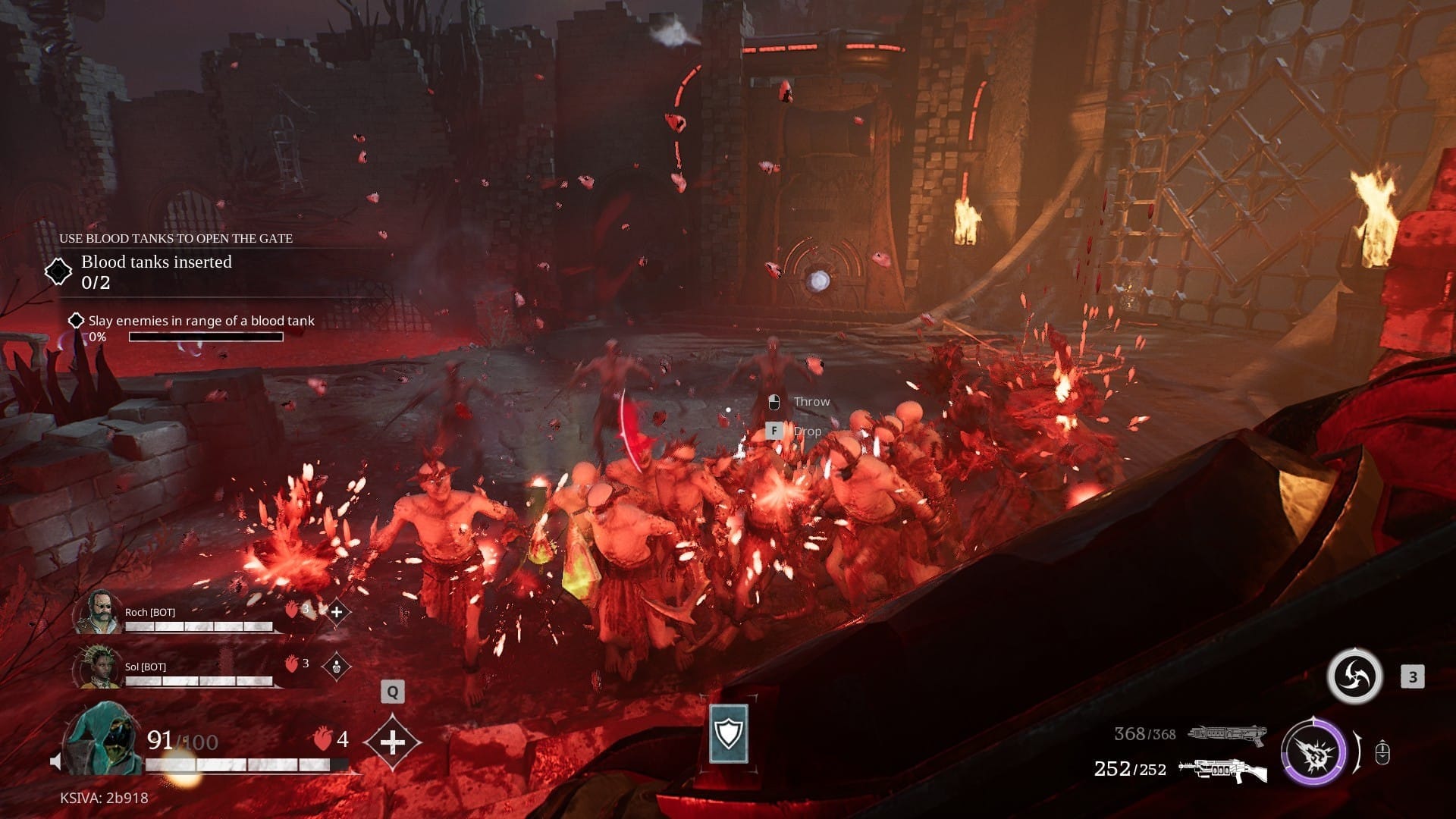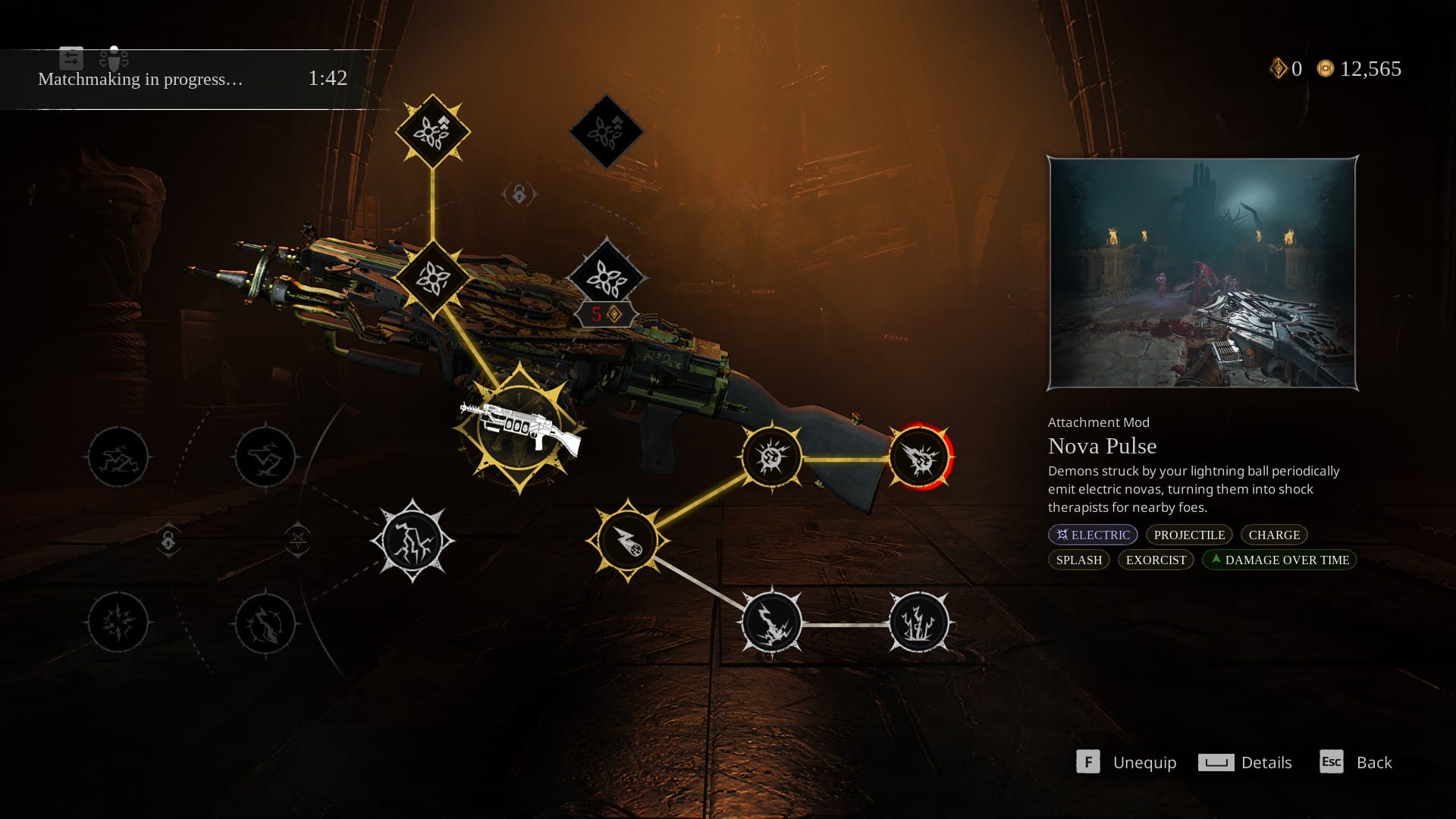
No one would blame you if you mistook this game for a remaster of 2006’s People Can Fly title. This new game, developed by Saber Interactive, is technically a reboot that chooses to hold onto some elements of its namesake while attempting to forge its own path. While I’ve had a blast with the game, I can’t help but feel like the experience is missing that je ne sais quoi to drive it out of Purgatory and into the realm of other heavenly, top-tier games.

Welcome to Purgatory. Neither heaven nor hell, eternity’s in-between has become an existence locked in eternal struggle between the holy Metatron and Azazel, the fallen angel. In a bid to work off the sins of your life, you’ll have to topple the hordes of demons and nephilim Azazel has recruited as backup.
Fans of the original Painkiller may find it a bit jarring to see that the narrative structure of the past has been set aside, opting instead for a multiplayer arena shooter. There are trickles of backstory for the four protagonists mentioned here and there, but the game is designed in such a way that none of it matters beyond flavor text. I could forgive that if Painkiller was a tremendous game with replayability I’d want to go back to, but what we ultimately got feels like it falls a bit short. It would’ve made more sense in my mind for this game to have been a solid multiplayer addition to what could’ve been a stellar single-player campaign. That said, there’s a lot of good here; it just feels lacking when contemporaries like Doom: The Dark Ages are so robust.

I want to make sure I say this loud and clear: Painkiller is a fast, fluid, viscerally satisfying first-person shooter, and you’ll have a great time with it. The game’s half dozen guns all feel great in their own ways, and, using tokens you earn as you play, upgrades allow for custom, specialized loadouts with unique abilities to suit your playstyle. You can also buy and equip a couple of tarot cards to get various effects. These are one-and-done, so you’ll need to be mindful of how and when you equip them. Finally, you can fill the shoes of one of four different characters. Each has some special effect (increasing weapon damage by 10%, for example), but these ultimately feel less effective than the fact that you can have different visuals on your avatar.
In terms of structured playthrough, Painkiller is set up with three “raids” - overarching mini-campaigns with their own aesthetic consisting of three missions each. The final mission of each raid culminates in a boss fight against a big, bad nephilim boss. While the existing structure keeps things siloed and more bite-sized, it feels like it would’ve fit better as a few stages in a meatier story they didn’t have the time to complete.

When you finish all of the raids, you’ll be granted access to Rogue Angel mode. This starts you out with two base-level firearms, giving players the opportunity to get weapon upgrades, tarot cards, and usable items as they complete a series of procedurally generated challenges before getting to take on a nephilim. It adds a couple of objectives not seen in the raids and provides something fresh since the order of challenges is procedurally generated.
You’ll kill enemies, fill buckets with their blood, collect and transfer souls, and escort NPCs through the wilderness while fending off swarms of demons…and unfortunately, that’s about it. From start to finish, you can clear all of the raids and a round of Rogue Angel in a handful of hours. Raids will be the same every time you play through them (barring difficulty differences), and Rogue Angel will have many of the same challenges over and over again. Thankfully, the gameplay feels fantastic. Unfortunately, though, the game we have feels like it should’ve been an extra mode for folks who’d already finished an incredible single-player offering that is missing here. The game simply feels like it missed a tremendous opportunity to establish itself as a modern industry staple, opting instead for a multiplayer arena shooter I’m afraid will dwindle all too soon without a dedicated playerbase.

From an audiovisual standpoint, Painkiller looks good on PC and runs as smoothly as a baby’s bottom. I didn’t notice any framerate hiccups or issues playing at 1080p on my somewhat-dated RTX 2080. The mouse-and-keyboard experience felt perfect, as I would expect from any PC shooter attached to 3D Realms. It’s probably no surprise, given the game’s aesthetic, that everything from the visuals to the soundtrack will feel familiar to Doom fans. We ‘90s kids loved the cacophony of shotguns, demon screams, and a thumpin’ bass line from a solid metal riff.

PlayStation 5 - Henry Viola
Painkiller favors performance over visual spectacle, and the PS5 version benefits from this approach. At 23.3 GB, it's a relatively small install that gets you into the action quickly. From the main menu, you're looking at roughly 12 seconds to load into a level, which is decent. The game runs at a locked 60 FPS throughout most encounters, even when the screen fills with dozens of demons flying everywhere. There's no performance or graphics mode toggle here. Unreal Engine handles the chaos pretty well, but you'll notice the occasional hiccup when particle effects pile up during particularly intense battles.
The DualSense implementation provides adaptive trigger resistance when firing and some haptic feedback, though nothing revolutionary. Aim assist is available for those who want it, and there's an FOV slider for players who prefer a wider view. Unfortunately, controller customization is limited to preset layouts rather than full button remapping. The multiplayer infrastructure includes crossplay support and a streamer mode for content creators, while the offline bot mode provides a solid practice alternative to matchmaking. Thank goodness for an offline mode!

Painkiller is an excellent first-person shooter with tight gunplay and fast, responsive movement mechanics that will have fans of games like Serious Sam excited. Raids are fun, and the Rogue Angel mode offers something a little different, but at the end of the day, it feels like a whole game created from an add-on mode for something larger. I hope folks will pick this up and have a blast — it really is a fun time. I’d also love to see Painkiller do well enough to warrant an entire single-player offering down the line. I could see this as a reworked franchise that rivals some of today’s juggernauts.
Painkiller
Great
Painkiller is a fast and frenetic arena shooter that evokes the best elements of its predecessors. Gunplay is tight, movement is quick and fun, encounters are well-designed, and the weapon upgrade mechanics are fun to explore. While the raids are an enjoyable ride and Rogue Angel offers some variety in replay value, it’s kind of disappointing that there wasn’t a cohesive story to be told. Couple that with matchmaking already showing signs of distress, and I have to wonder if this wouldn’t have been better served as a narrative single-player experience. Still, what’s here is a blast, especially if you have a couple of friends to play with.
Pros
- Excellent arcade arena shooting gameplay
- Movement and shooting feel great
- Weapon variety and upgrades are fun
Cons
- Establishes itself as a game for replayability, but feels like an add-on mode for something larger
- Matchmaking can be a waiting game if you want a specific experience
- Characters don’t feel mechanically different enough to make a difference
This review is based on a retail PC copy provided by the publisher.

